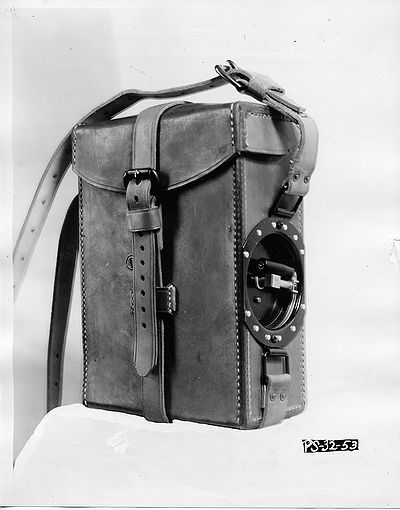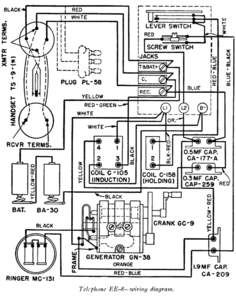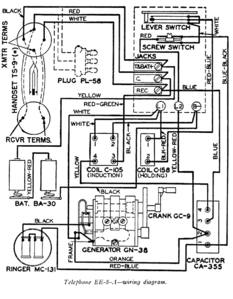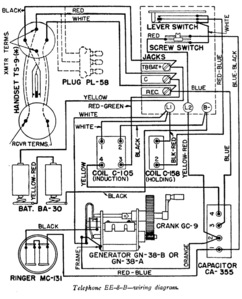Difference between revisions of "EE-8"
Jump to navigation
Jump to search
RadioNerds (talk | contribs) |
RadioNerds (talk | contribs) |
||
| Line 5: | Line 5: | ||
==Schematics== | ==Schematics== | ||
| − | + | <gallery widths=300px heights=300px perrow=3> | |
| − | EE-8 Schematic | + | File:EE-8_Schematic.png|EE-8 Schematic |
| + | File:EE-8-A_Schematic.png|EE-8-A Schematic | ||
| + | File:EE-8-B_Schematic.png|EE-8-B Schematic | ||
| + | </gallery> | ||
| − | |||
| − | |||
| − | |||
| − | |||
| − | |||
| − | |||
| − | |||
==Images== | ==Images== | ||
Revision as of 18:31, 18 August 2013
The EE-8 Field Telephone was used by the Signal Corps from before World War II through the Vietnam War. It was housed in leather, then canvas, and its last production had a nylon case and straps, after the changeover to that material in 1967.
The EE-8 Field Telephone was standardized in 1932 and procurement began in 1937, providing a lighter and more functional unit just in time for the huge mobilization of the U.S. military for WW II. Among other improvements, the EE-8 increased the maximum transmission range of the predecessor EE-5 Field Telephone by six miles or more.
Schematics
Images
- EE-8-A Schematic-1.png
- EE-8-A Schematic-2.png
Schematic EE-8-A
Related Files
- War Department Technical Manual
- Telephones
- EE-8,
- EE-8-A
- EE-8-B
- March 1945











